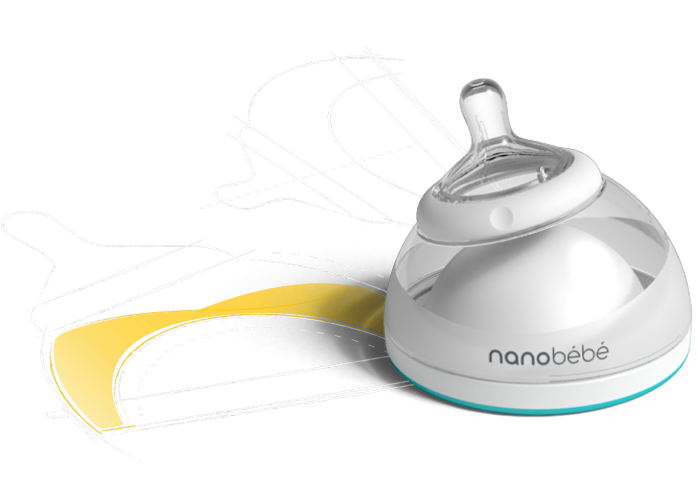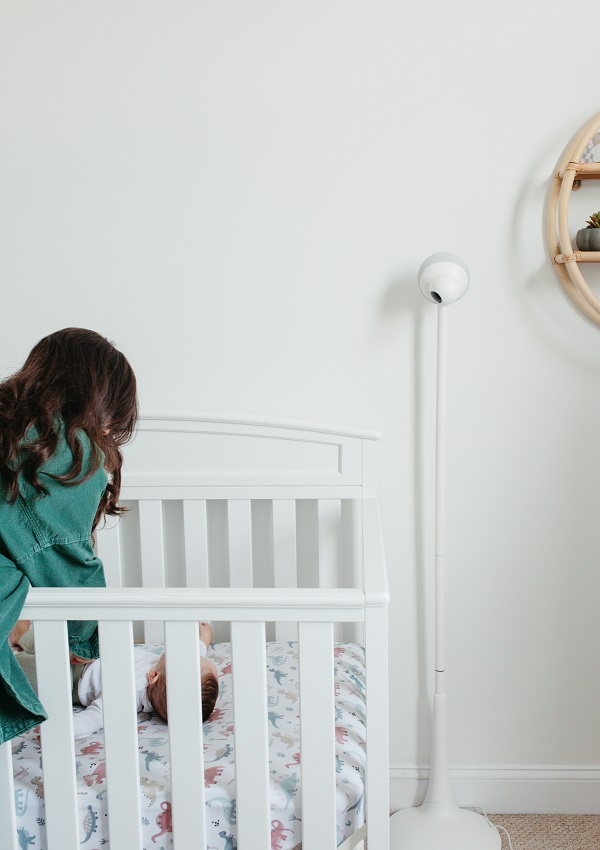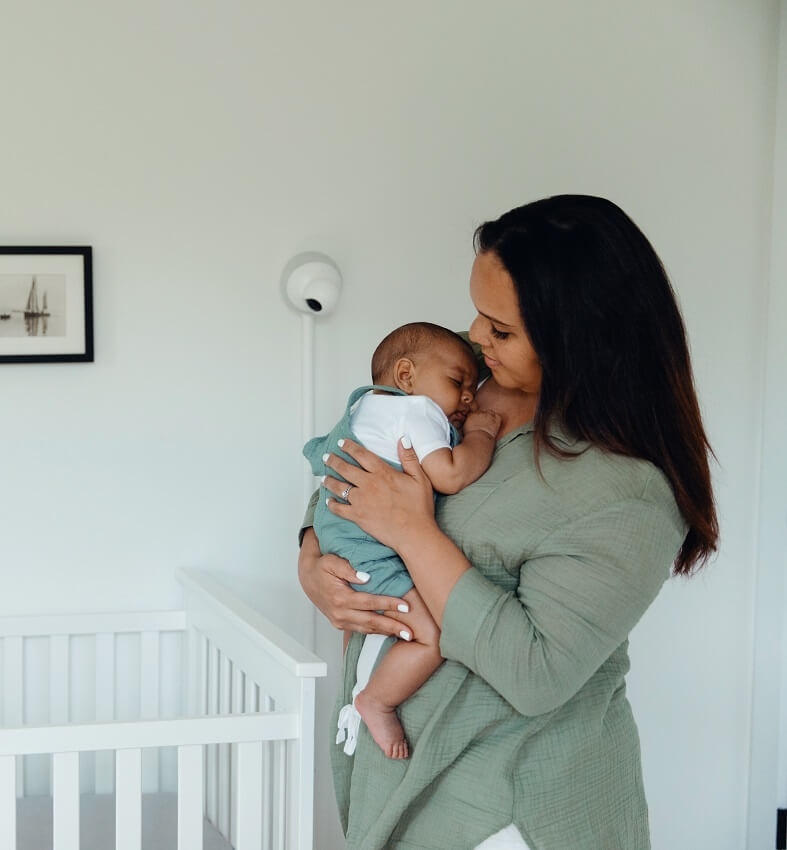Embracing the 4-Month Regression as a 'Sleep Progression'
All about your baby's 4 month sleep patterns and regression

Gemma Cartwright
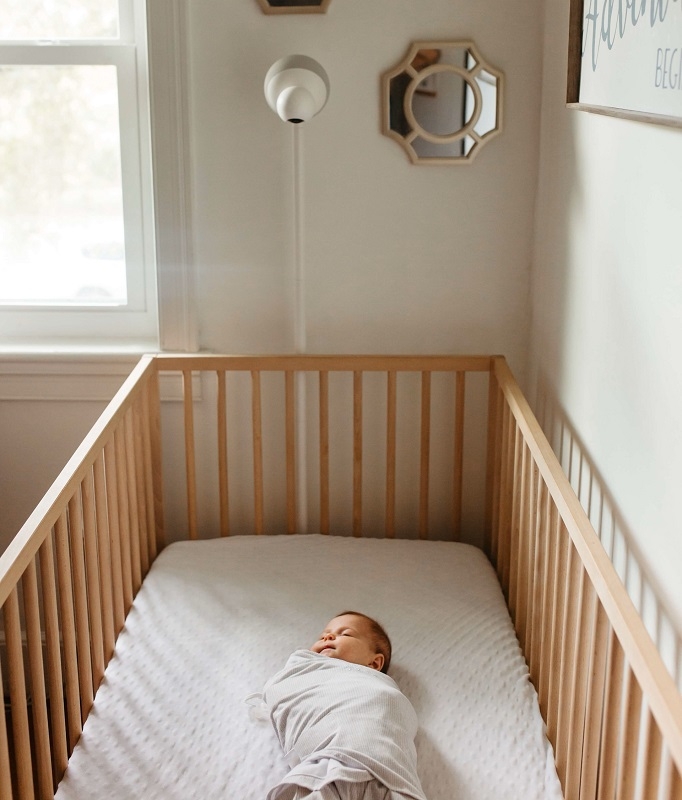
As a professional sleep consultant, Gemma Reynolds hears the term “regression” used in about every imaginable circumstance. If a baby doesn’t sleep well for a couple of nights, parents start dropping the ‘R’ word. Some people subscribe to the idea that there’s an 8-month regression, a 9-month regression, a 1-year regression, as well as teething regressions, growth spurt regressions, and so on. Others see these as simple hiccups caused by extenuating circumstances.
The occurrence of the four-month regression is widely acknowledged. To better understand what’s happening during this stage, you need to know a few things about sleep in general.
Many of us just think of sleep as an on-or-off situation. You’re either asleep or you’re not. But sleep actually has a number of different stages, and they make up the “sleep cycle,” which we go through several times a night.
Stage 1 is that initial stage we’re all familiar with where you can just feel yourself drifting off, but don’t really feel like you’ve fallen asleep. Anyone who has ever seen their partner nodding off in front of the TV, told them to go to bed, and gotten the canned response of, “I wasn’t sleeping!” knows exactly what this looks like.
Stage 2, which is considered the first “true sleep” stage. This is where people tend to realise, once woken up, that they were sleeping. For anyone taking a “power nap,” this is as deep as you want to go, or else you’re going to wake up sleepy.
Stage 3 is deep and regenerative. Also known as “slow wave” sleep which sparks growth and development. This is where the body starts repairing and rejuvenating the immune system, muscles tissue, and energy stores.
Stage 4 is REM (rapid eye movement) sleep. This is where the brain starts to kick in and consolidates information and memories from the day before. It’s also the stage where we do most of our dreaming.
Once we’ve gone through all the stages, we either wake up or come close to waking up, and then start over again until the alarm goes off. What does this have to do with the dreaded regression we were talking about originally?
Newborn babies only have 2 stages of sleep; stage 3 and REM, and they spend about half their sleep in each stage. But around the third or fourth month, there is a reorganisation of sleep, as they embrace the 4-stage method of sleep that they’ll continue to follow for the rest of their lives.
When this change takes place, the baby moves from 50% REM sleep to 25% to make room for those first two stages. Although REM sleep is light, it’s not as light as these 2 new stages that they’re getting used to, and with more time spent in lighter sleep, there’s more of a chance that the baby's going to wake up.
That’s not to say that we want to prevent or avoid babies waking up. Waking up is natural, and we continue to wake up three, four, five times a night into adulthood and even more in old age.
As adults, however, we’re able to identify certain comforting truths that a baby might not be privy to. When we wake in the night, we’re able to recognize that, “Hey, I’m here in my bed, it’s still night-time, my alarm isn’t going to go off for another three hours, and I’m reasonably certain that there are no monsters lurking under my bed. I can go back to sleep”
And we do. Usually so quickly that, the next morning, we don’t even remember the brief encounter with consciousness.
A four-month-old baby, of course, lacks these critical thinking skills. To a four-month-old baby who fell asleep at her mother’s breast, the reasoning could go much more to the tune of, “OK, last thing I remember, there was a familiar, beloved face, I was having dinner, and someone was singing me a soothing song about the Teddy Bears’ Picnic. Now I’m alone in this dark room, there’s no food, and there’s probably at least three, possibly four, scary monsters in the immediate vicinity.”
That’s probably an exaggeration, but who knows what goes on in the mind of a four-month-old baby?
Anyways, now that the baby’s suddenly realised that Momma’s not around, and they’re not entirely sure where they’ve gone, the natural response is to do a little freaking out. That stimulates the fight-or-flight response and, next thing you know, the baby’s not going back to sleep without a significant amount of reassurance that everything is OK.
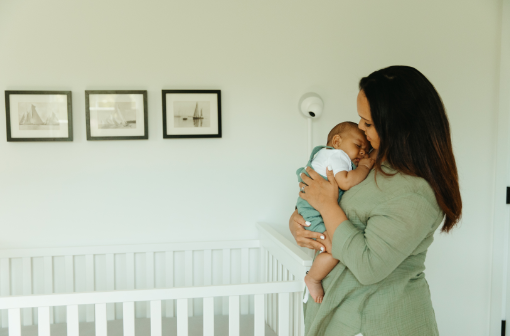
The other major contributor to this 4-month fiasco, I find, is that up until this point, parents have either been putting their baby to sleep, by rocking them, breastfeeding them, or some similar technique where the baby is helped to fall asleep.
Now that the baby is spending more time in light sleep, and therefore has a higher probability of waking up, this suddenly becomes a much bigger issue. These sleep props or sleep associations can be very sneaky indeed, because although they may be helpful in getting your little one to that initial nodding off stage, the lack of them when they wake up means that baby’s not able to get back to sleep again without some outside help. Cue the fight-or-flight, the crying, and the adrenaline. When this starts happening every half an hour, parents can find themselves in a nightmarish situation.
The good news for anyone experiencing the dreaded Four Month Sleep Regression is that it’s not, in fact, a regression at all. A regression is defined as “reversion to an earlier mental or behavioural level,” and that’s actually the opposite of what your baby is experiencing. This would be much more aptly titled the “Four Month Sleep Progression”
Now onto the big question. What can you do to help your little one adjust? First off, get all of that light out of the baby's room. I’m not kidding around here. You might think that baby’s room is dark enough, or that baby might not like the dark, and that it’s comforting to have a little bit of light coming through the windows or seeping in from the hallway…Nope!
Baby’s room should be dark. I mean coal mines on a moonless night kind of dark. Tape rubbish bags over the windows if you have to or cover them with tinfoil. (I know that may look odd, but it works).
Newborns and infants are not afraid of the dark. They are, however, responsive to light. Light tells their brains that it’s time for activity and alertness, and the brain secretes hormones accordingly, so we want to keep that nursery absolutely pitch-black during naps and bedtime.
The other nemesis of daytime sleep, (and night-time for that matter, although not nearly as often) is noise. Whether it’s a delivery driver ringing the doorbell, the dog warning you that the squirrels are back and for sure going to attack the house this time, or something falling on the floor three rooms away. With babies spending more time in lighter sleep, noises will startle them easily and wake them up, so a white noise machine (or a baby monitor with a built-in white noise machine) is a great addition to your nursery.
“Wait, isn’t that a prop,” you’re asking. Well, in a way, it is, but it doesn’t require any winding, resetting, reinserting, or parental presence. It’s just there and it can be on as long as baby’s sleeping, so it’s not a prop we need to avoid.
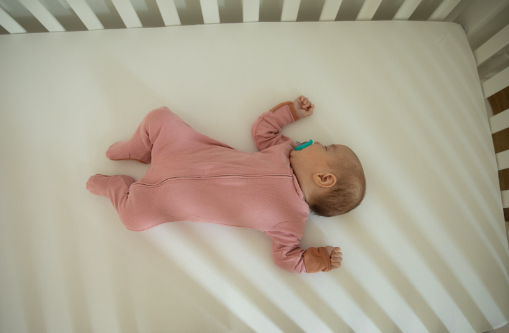
Bedtime routines are also an essential component good baby sleep. Try to keep the routine to about 4 or 5 steps, and don’t end it with a feed. Otherwise, you risk your baby nodding off at the breast or the bottle, and that will create the dreaded “association” that we talked about earlier.
Try to keep the feed near the beginning of the routine and plan the songs, stories, and getting into PJs towards the end. The whole process should be about 20 - 30 minutes long, and the baby should go into their cot while they’re still awake.
If you’re noticing the baby getting fussy before bedtime, you’ve probably waited too long. Four-month-old babies should only be going about two hours between snoozes, and bedtime should be between 7 and 8 at night.
Now, there are going to be regressions, actual regressions, later in your little one’s youth. Traveling, illness, cutting teeth, all of these things can cause your little one to have a few bad nights in a row. But when it comes to the four-month “progression,” I’m happy to report that this is a one-time thing. Once you’re through this, your baby will have officially moved into the sleep cycle that they’ll essentially be following for the rest of their life. Four glorious stages repeated multiple times a night.
And by taking this opportunity to teach them the skills they need to string those sleep cycles together, independently, prop-free, without any need for nursing or rocking, you’ll have given them a gift that they’ll enjoy for the rest of their young lives.
*Nanobébé is thrilled to welcome guest bloggers. The views and opinions represented in these blog posts belong solely to the guest blogger and are not the legal responsibility of the company. The owner of this blog makes no representations as to the accuracy or completeness of the information provided by the guest blogger and will not be held liable for any errors or omissions of information nor for the availability of this information.

Gemma Cartwright
Share this post
